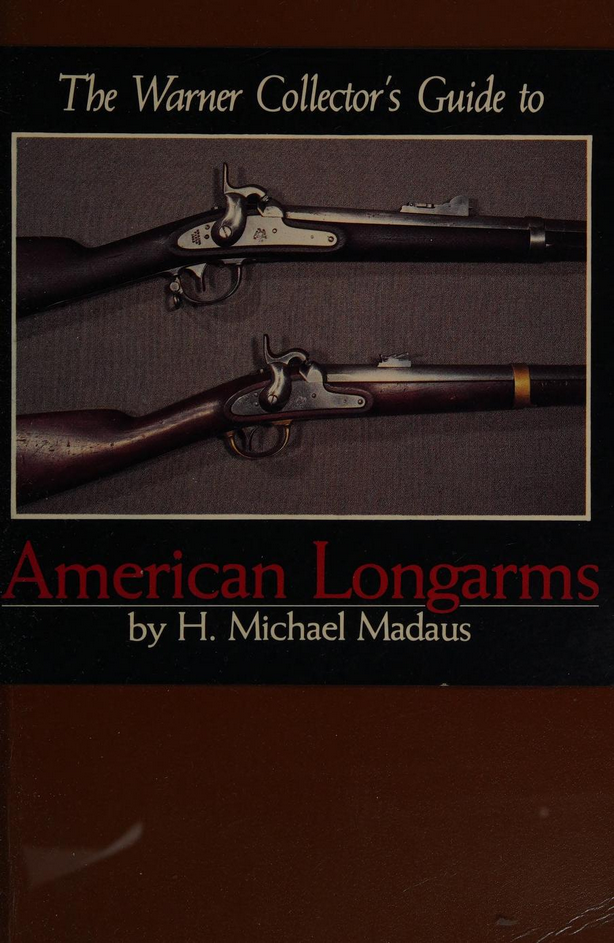Book Review: The Warner Collector’s Guide to American Longarms

As I’ve mentioned in previous book reviews, many of the best books on historic firearms are nearly as difficult to come by—if not more so—than the guns themselves. They’ll often receive only one or two print runs, then become future researchers’ unobtanium. This review, unfortunately, is of one of those.
As the title suggests, The Warner Collector’s Guide to American Longarms [sic], by Howard Michael Madaus, former director of the prestigious Cody Firearms Museum, is a highly specialized book aimed squarely at collectors of historic rifles, muskets, carbines, and the like. It covers some 500 types of black powder firearms from early American history, from the founding through the end of the 19th Century. “The restriction to arms produced before 1900,” Madaus writes in the introduction, “should not be as judged to imply that arms made after that date are not collectible;” merely that at smokeless powder firearms were not sufficiently obsolete to fit in the scope of the book. From the reader’s perspective, limiting the book by technology and time period helps to keep it focused and allows for greater variety and detail in what it does cover. In contrast to coffee table books like those by Amber and Dorling Kindersley, the Warner’s Guide is intended strictly as a resource for collectors who need its information density and conciseness.
This 255-page volume is divided into 50 chapters, not separated by manufacturer or time period, but each focusing on a particular configuration, for example, “Arsenal Alterations from Flintlock to Percussion” or “Patented Breechloading, Single-Shot Cartridge Rifles.” As a guide for collectors, this is exactly what you want. Each entry comes with a photograph, a set of dimensions, a physical description, a brief overview, details on exact configuration and markings, and a letter grade according to the firearm’s rarity. Imagine yourself at gun show or an antiques auction trying to figure out what each firearm is and how rare it is before you spend hundreds of thousands of dollars to add it to your collection—for that use case, a jacket-pocket-sized book like this, with photographs and technical details on hundreds of different types is invaluable.
As near as I can tell, this book was only printed once, in 1981, and I suspect it wasn’t a very large print run. Ironically, however, its highly specialized nature has helped to ensure its continued availability in the present day. A museum curator lent me the copy I’ve been using for some professional research, but used copies appear to be available online, with some listings priced under $10. If you’re looking to get into collecting antique black powder long arms, I highly recommend you snatch up a copy while they can still be had. If you aren’t a collector, please don’t buy this book! Leave it for the people who need it! If you want to read it, you can borrow it digitally on archive.org and do your research that way.
